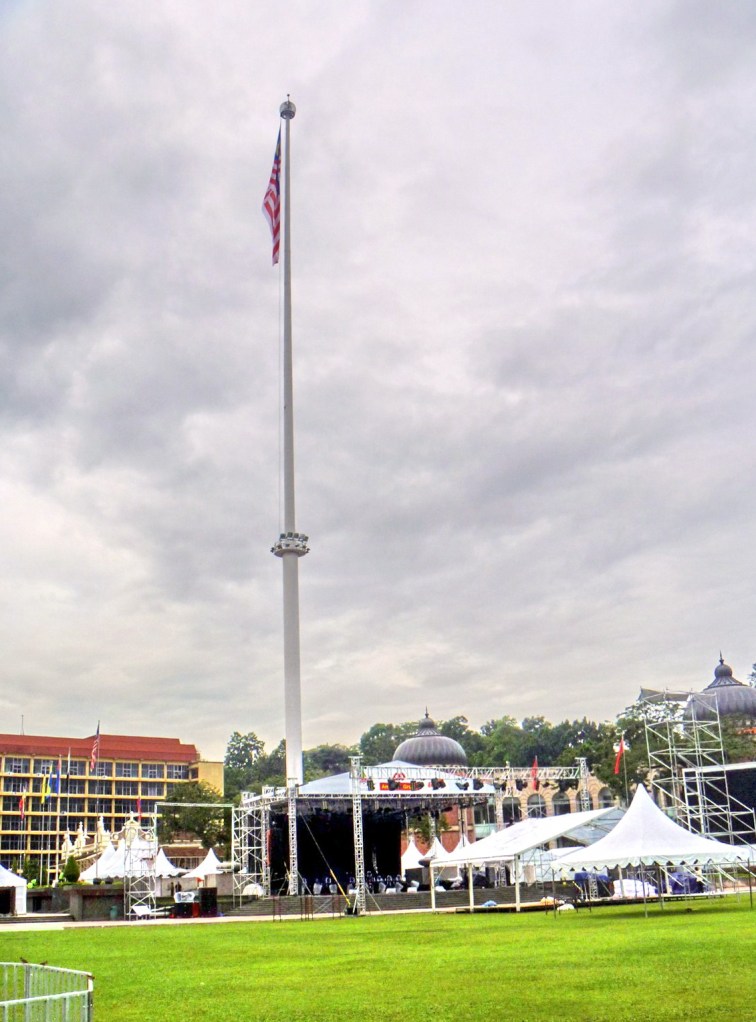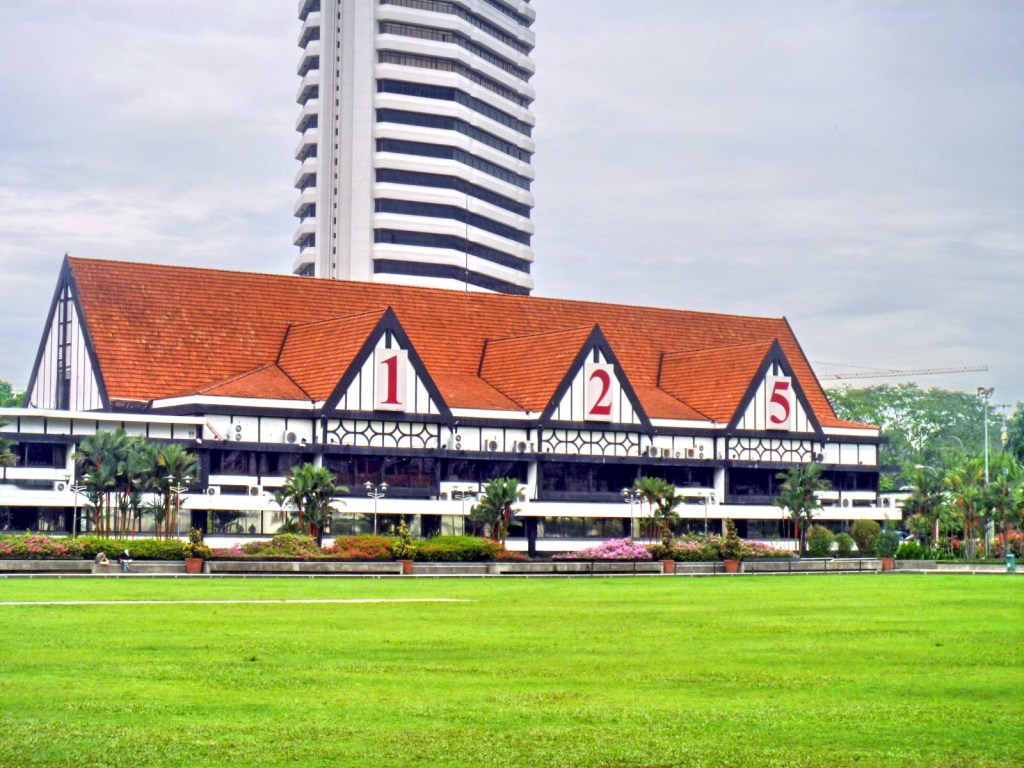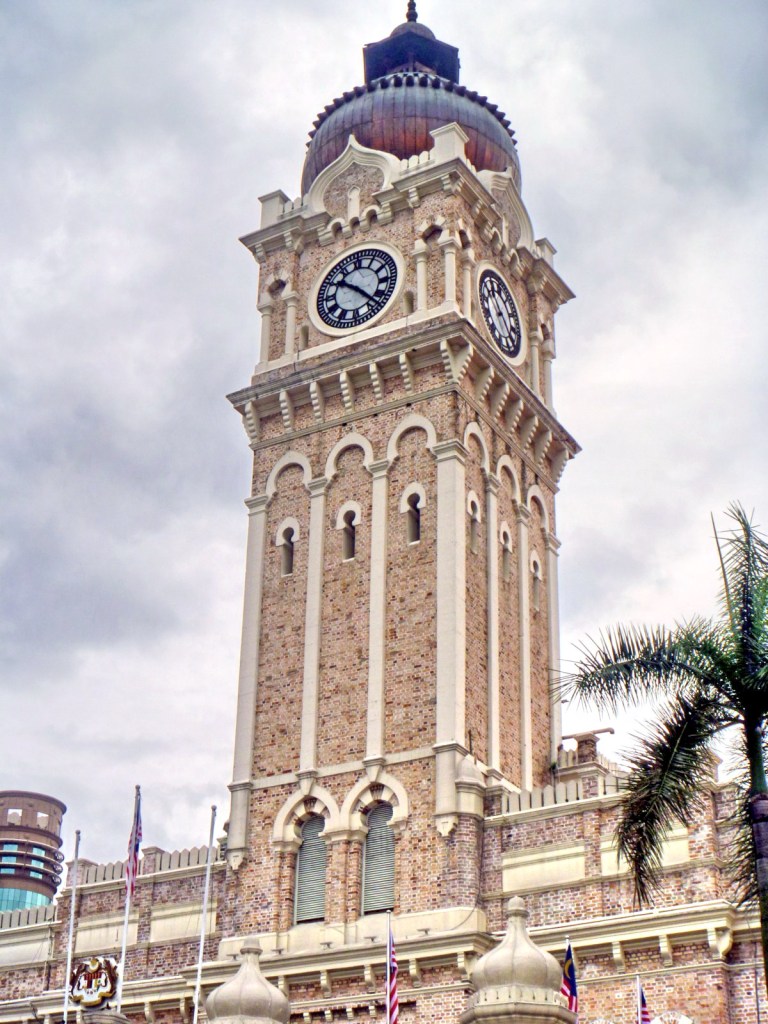Part of our city tour itinerary and a “must see” is the 8.2-hectare Merdeka Square (Dataran Merdeka or Independence Square), actually a large grassy field used for cricket. Here, thousands of Malaysians celebrated 50 years of nationhood on August 31, 2007. It is surrounded by many buildings of historical interest.
A 95-m. high flagpole, one of the tallest in the world, marks the spot (with a flat, round black marble plaque) where the British Union Jack flag was lowered and the Malayan flag was first hoisted at midnight of August 31, 1957. It is located at the southern end of the square.
On one side of the square is the Royal Selangor Club‘s (founded in 1884) quasi-Tudor-style building. Originally designed by British architect A.C. Norman and built in 1890, it was later redesigned by architect Arthur Benison Hubback and rebuilt in 1910, with 2 additional wings on either side of the main building. The club is a place to watch a game of cricket on a Sunday afternoon.
In stark contrast across the square is the Mughal-styled Sultan Abdul Samad Building. A famous landmark for Malaysia and KL prior to the building of the Petronas Twin Towers, this unique, Indian Mughal-style building, designed by British architect A.C Norman, was completed in 1897. Once serving as the Selangor State Secretariat and, later, the Supreme Court during the British era before being abandoned for a number of years, it is now home to Ministry of Heritage, Culture and Arts.
This much photographed building also has a 40 m. high clock tower (affectionately dubbed “Big Ben”) topped with a gleaming copper dome and flanked on both sides by two domed towers. Next to it is the original Kuala Lumpur Railway Station built in 1910.
St. Mary’s Anglican Cathedral, an Early English Gothic style building, was built in 1895. Other notable structures include the National History Museum (formerly the Chartered Bank Building), the Memorial Library (formerly the Government Printer Building, built in 1899), and the Sanitary Board Fountain (built in 1897).






